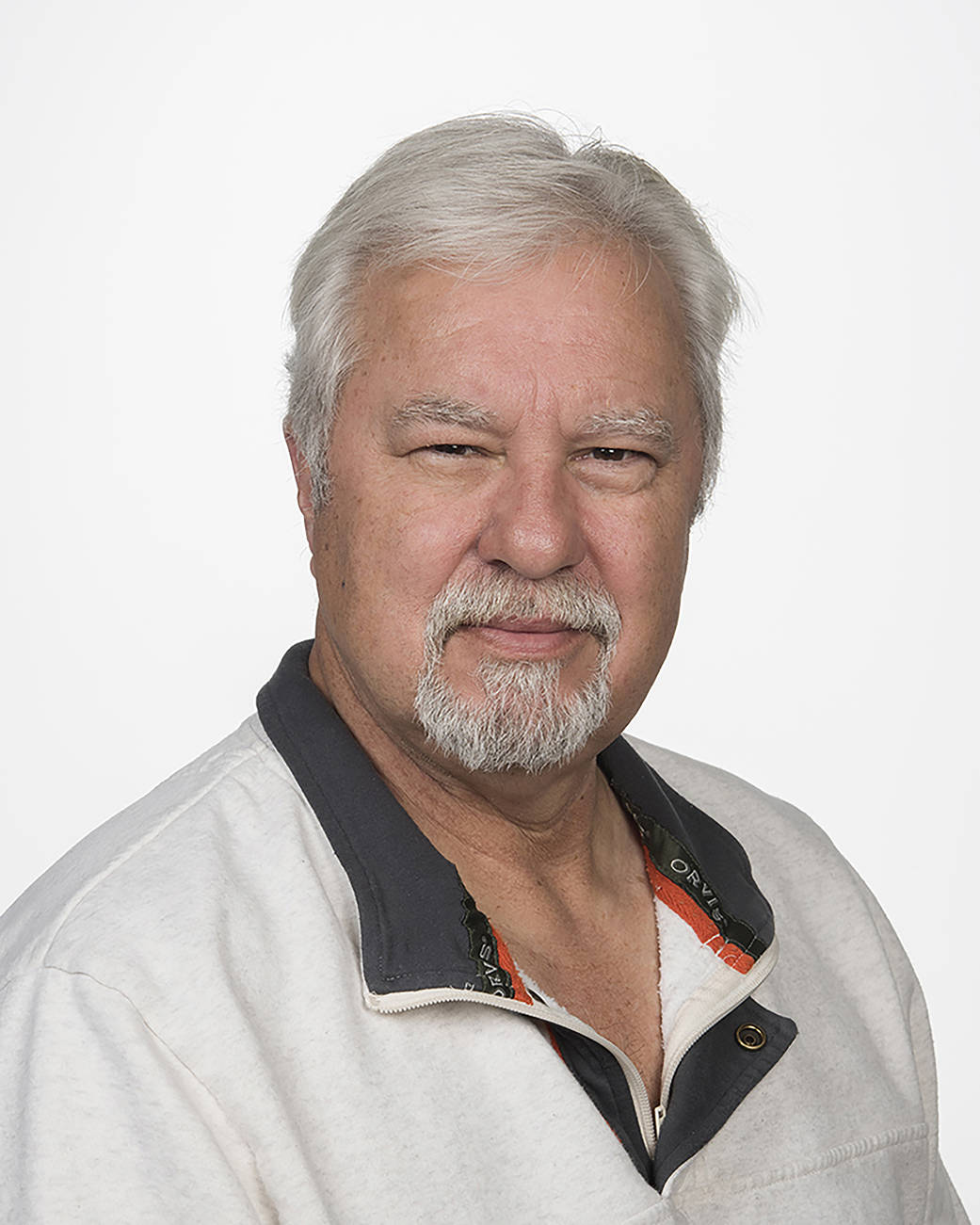Steven Lighthill, an enrolled descendent of the Karuk tribe of northern California, began his lifelong career in art when he began his studies at the age of 16, taking courses in painting, sculpture, and jewelry during high school in northern California. After a tour of active duty with the U.S. Air Force, he went back to college to study design, earning a degree in fine art. He began his career in art as an illustrator for the Air Force. He also accepted freelance commissions for portraits and other work, including designing slates for the local television station, and logos for other businesses. His illustrations and designs have been on display in the Smithsonian Air and Space Museum, the Chicago Art Institute, the Library of Congress, as well as other venues.
史蒂文·莱特希尔是加州北部卡鲁克部落的注册后裔,他在16岁的时候开始了他的终身艺术生涯,在北加州的高中学习了绘画、雕塑和珠宝课程。在美国空军服役期间,他回到大学学习设计,获得了美术学位。他开始了他的艺术生涯,担任空军的插画师。他还接受了肖像和其他工作的自由委托,包括为当地电视台设计标牌,以及为其他企业设计标志。他的插图和设计已经在史密森尼航空航天博物馆、芝加哥艺术学院、国会图书馆以及其他场所展出。
Lighthill currently works as the Visual Communications Manager and Public Outreach Manager at the NASA Armstrong Flight Research Center, where he is responsible for Armstrong’s exhibit and outreach programs and serves as an art director for the center. He also serves as the center’s printing officer.
莱特希尔目前在美国宇航局阿姆斯特朗飞行研究中心担任视觉沟通经理和公共推广经理,负责中心的展览和推广项目,并担任该中心的艺术总监。他还担任该中心的印刷负责人。
The tribal lands of the Karuk people are located alongside the Klamath River from the town of Orleans in the west to Yreka in the east. The tribal headquarters are located in Happy Camp, California, on Highway 96. He grew up hearing stories about his ancestors from his father and grandmother, visiting Karuk territories whenever possible. His father had a career in the Air Force so the visits were few and far between. As an adult he has had more frequent visits to the river and continues to bring his children and grandchildren whenever possible.
卡鲁克人的部落土地位于克拉马斯河沿岸,从西部的奥尔良镇到东部的伊雷卡。部落总部位于加利福尼亚州96号公路上的快乐营地。他从小就听父亲和祖母讲述祖先的故事,只要有可能,他都会去卡鲁克地区。他的父亲曾在空军服役,因此到访部落土地的机会很少。成年后,他更频繁地来到访这条河,并继续尽可能带着他的孩子和孙子孙女一同前往。
Lighthill said, “I am proud of my heritage and brought as much of it into my work environment as possible. The fact that I have Native American ancestry has helped guide my choices in my life and career in an effort to return to as close to my roots as possible.”
莱特希尔说:“我为自己的传统感到自豪,并将其尽可能多地融入到工作环境中。我拥有美洲土著血统,这一事实有助于指导我在生活和职业生涯中的选择,以尽可能地回归我的根。”
As concerns STEM (science, technology, engineering, and math) versus STEAM (science, technology, engineering, art, and math) education, he said: “While I work for a highly technical and scientific organization, I am blessed to have a career in my chosen field with my dream agency. I am able to create meaningful designs and artwork as well as help shape agency policies on graphic standards. As such, STEAM is a much more viable education program than STEM in my opinion. Of course I am biased because of my chosen profession.
关于STEM(科学、技术、工程和数学)与STEAM(科学、技术、工程、艺术和数学)教育,他说:“当我在一家高技术和科学组织工作时,我很幸运能在我所选择的领域和我梦想中的机构工作。我能够创造有意义的设计和艺术品,并帮助制定机构的图形标准政策。因此,在我看来,STEAM比STEM更可行。当然,由于我选择的职业,我有偏见。
My advice to young Native Americans would be to concentrate on what your dreams are, STEM or STEAM, and work to realize those dreams. NASA, and other technical organizations, use a variety of skills to fulfill their missions and just because you are not an engineer or scientist does not mean you cannot work for them. I am living proof that anyone can work for NASA. Concentrate on becoming good at your chosen profession, study, attend courses, work diligently to improve your skills. Do not rely on natural talent, learn! I did not start advancing my career until I realized that talent alone would not get me where I wanted to go.”
我对年轻的美国原住民的建议是,专注于你的梦想是什么,STEM还是STEAM,并努力实现这些梦想。NASA和其他技术组织使用各种技能来完成任务,仅仅因为你不是一个工程师或科学家,并不意味着你不能为他们工作。我是活生生的证据,任何人都可以为NASA工作。注于你选择的职业,学习,参加课程,勤奋工作来提高你的技能。不要依赖天资,学习吧!直到我意识到,单凭天赋并不能让我达到目标,我才开始推进我的事业。”
#NativeAmericanHeritageMonth
#NAHM
Image Credit: Courtesy of Steve Lighthill
图片来源:Steve Lighthill提供







